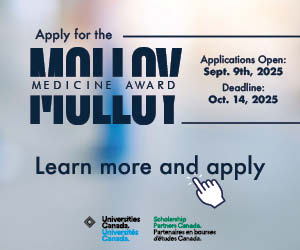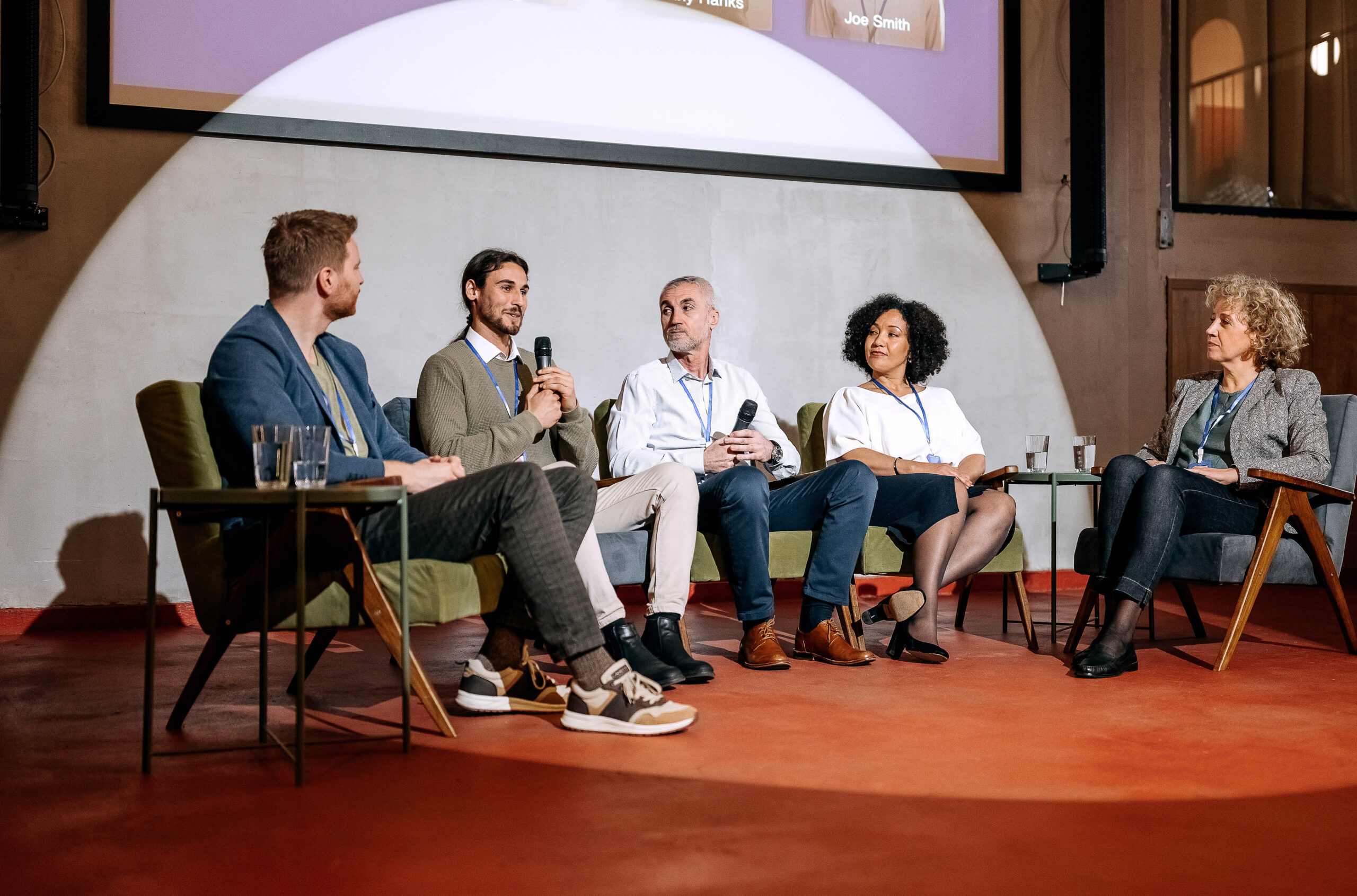Drafting compelling letters of support for research grant funding
Tips, sample sentences, and a template letter for your research partners.

Question:
I’m an early career researcher, and until now I’ve only ever written CIHR grant applications to fund myself — never to fund a research project. I’ve ghostwritten letters of reference for my research supervisors (which they, of course, edited before signing), but I’ve not drafted one for a research partner before. What goes into a good letter of support? Are non-academics used to having one ghostwritten for them?
– Anonymous, Nursing
Dr. Editor’s response:
Let me tackle your second question first. The answer: maybe, maybe not. When I email a partner organization to request a letter of support, I usually say something like, “These federal funding agencies have specific expectations for letters of support. Would it be okay with you if I draft a template letter for your team to edit and revise before signing? That should minimize the work required on your behalf.” This phrasing, I find, makes it easier for the partner to agree to my drafting a letter for them to review, edit, and sign.
And it is true that the federal funding agencies do have specific expectations for their letters of support: here are NSERC’s expectations and here are CIHR’s (with some examples of well-written sentences); SSHRC has separate guidance for their Connection and their Partnership Grants.
In truth, I use the same template for all letters of support, regardless of the funding agency. Because no matter which funder or what program, letters of support always need to answer the same basic set of questions:
- Who is the partner?
- Why are they keen to see the project be funded?
- What will they contribute to the project? and,
- How will they be involved in the research and knowledge mobilization?
So, what goes into a good letter of support? Here are some of my favourite go-to tips and sample sentences:
Opening reference to the project, principal investigator (PI), and funding scheme:
“On behalf of [organization name,] I am pleased to partner with principal investigator [name] on the proposed [name of funder and funding program] grant, [title of grant].” The opening paragraph should show that the partner organization knows the details of the project they’re going to take part in, as a true partner should.
Cut and paste from the partner organization’s “about” webpage:
Because your reviewers likely won’t be familiar with your partner and their work, you’ll need to briefly summarize the type of work your partner does. By cutting and pasting from the “about” page on their website, you’ll be drawing on language that your partner has already approved, making it easier for them to review and agree to your draft text.
Alignment with partner’s mission, vision, or strategic priorities:
“[Organization name]’s support of this partnership aligns with our four values — A, B, C, and D — and advances key goals outlined in our 202X Strategic Plan, including …”.
Your reviewers want to know that your partner is committed to doing the kind of work described in your grant. Showing your work’s alignment with your partner’s mission, vision, values, or strategy is one good way to provide evidence of their commitment to your proposed collaborative work.
History of relationship with the PI or project team:
“[Organization name] has been working with [PI or team member name] since Spring 202X, and thus far we have [brief description of collaboration or achievements]. We look forward to continuing this partnership, to [co-developing deliverable X or achieving objective Y], and ultimately to [achieving shared goal].”
Reviewers for academic research grants are notorious for wanting to avoid risks. If you’re able to demonstrate having worked together successfully on previous projects, then you’ll appear more likely to be successful in future projects. If this is your first partnership together, then articulate when you connected, and argue why you are well-positioned to be successful in your collaboration (for example, because of a shared vision or goal).
Articulation of importance:
“[Project title] will address an important need among [partner’s clients or community], as it will [produce general outcome]. As [type of organization/size of company in a particular market], we see [daily/regularly] [negative situation caused by need for project]. Without the crucial work on [topic] proposed in this application, we risk [long-term negative outcome].”
Reviewers will want to know that the partner and the PI share a unified vision for the outcomes and impact of the proposed research. By arguing why the work is important — and, if relevant, why now is a good time to do this work — you’ll show reviewers that all involved in the partnership are clear on what the research will do and who it is for.
Support for knowledge mobilization:
“In addition, we will share the results of this partnership [or deliverable X] both with our [clients/community] and, to increase the impact of this work, with related organizations in our network through [professional association event, conference, or blog; industry newsletter or webinar series; social media channels].”
Funding agencies will want to know that your collaborative work will resonate beyond the boundaries of your partnership, and partner organizations are often well-networked with colleagues in other regions. Involving your partners in shared knowledge mobilization activities enables smooth communication and a broad reach for your results.
Cash or in-kind contributions:
“In support of this project, we commit to providing $XX,XXX cash to this project ($XX,XXX per year over XX years). These funds will be used to [description of intended use of funds.] In addition, we commit to providing at least $XX,XXX in kind to this project over its XX-year span. These in-kind contributions have been calculated as follows: (i) In Year 1, 10 hours of support to recruit interview participants via social media posts, emails to our XX-person listserv, and announcements at community events x $50/hr = $500. (ii) …”
Every Tri-Agency funder expects to see a dollar figure attached to the cash and in-kind contributions associated with a research project. Ask your partner to provide as much detail as possible about the specific supports they will be providing to this project. You can assure them that no one will audit them to verify whether they contributed 9.5 or 10 hours to any one discrete task. Still, the estimated time commitments that they agree to provide should be as accurate as possible, because your reviewers will want to see evidence of feasibility and experience in this letter.
Statement of overall impact:
“By working with [PI Lastname] to co-create [deliverable X], we anticipate seeing [improvement or concrete outcome that is achievable within timeframe of grant].”
You’ll want to describe both the specific, concrete impact that your partner anticipates for their clients or community, as well as the broader general impact that your work will have on people and organizations not directly connected to this project. As CIHR notes in their “Writing Letters of Support” guidelines, most of the weak letters of support they have seen have lacked “a description […] of the outcomes or impact that the research might have for the letter writer.” A short paragraph on specific and general impacts is key to a compelling letter.
Closing confirmation of enthusiasm:
“In sum, on behalf of [organization name], we strongly support the proposed application, and hope to see it funded through a [name of funder and funding program] grant. [Optional short sentence describing why this work is crucial and/or timely.] If you have any questions about this letter, please contact [name, title, unit, phone number, and email address.]”
A closing restatement of your partner’s excitement about the proposed project is conventional in letters of support. This short paragraph can be general, but it should use words like “strongly support,” “enthusiastic,” or “excited.”
In short: A compelling letter of support is detailed, provides commitments on behalf of the partner organization, and articulates the impact and importance of the proposed work. In that way, it’s not unlike the modules you’ll write in the rest of your grant application!
These example sentences can get you started, but a great letter of support also answers key questions about why the partner wants to be involved and how they’ll advance the project’s overarching goals. Want to take my template letter of support and adapt it for your next CIHR, NSERC, or SSHRC grant application? Grab your copy of my template letter here.
Featured Jobs
- Canadian Politics - Assistant ProfessorUniversity of Toronto
- Political Science - Assistant Professor (Political Theory)Saint Mary's University
- Chaire de recherche du Canada, niveau 2 sur l'inclusion dans l'éducation de la petite enfanceUniversité du Québec à Trois-Rivières (UQTR)
- Science - Assistant Professor (Teaching)The University of British Columbia
- Psychology - Assistant Professor (Clinical Psychology)Queen's University
















Post a comment
University Affairs moderates all comments according to the following guidelines. If approved, comments generally appear within one business day. We may republish particularly insightful remarks in our print edition or elsewhere.